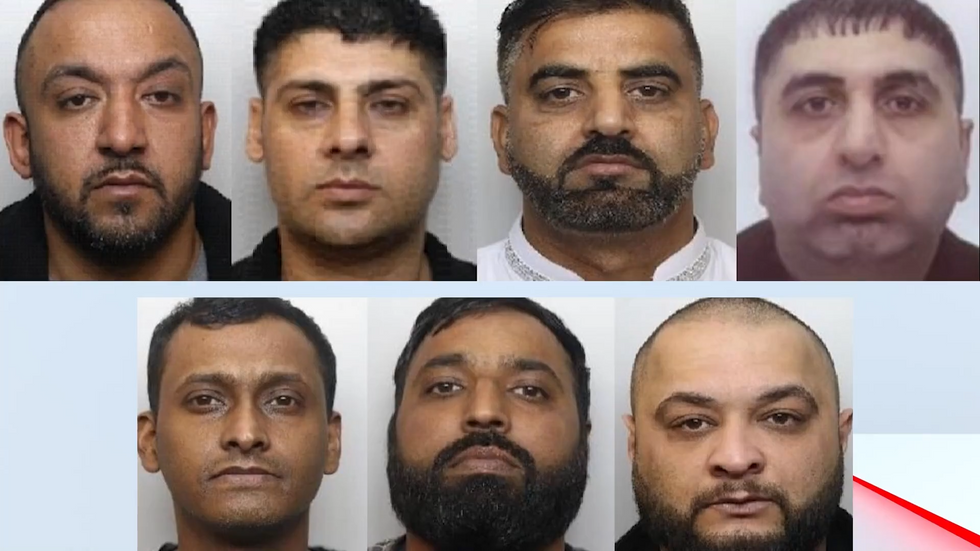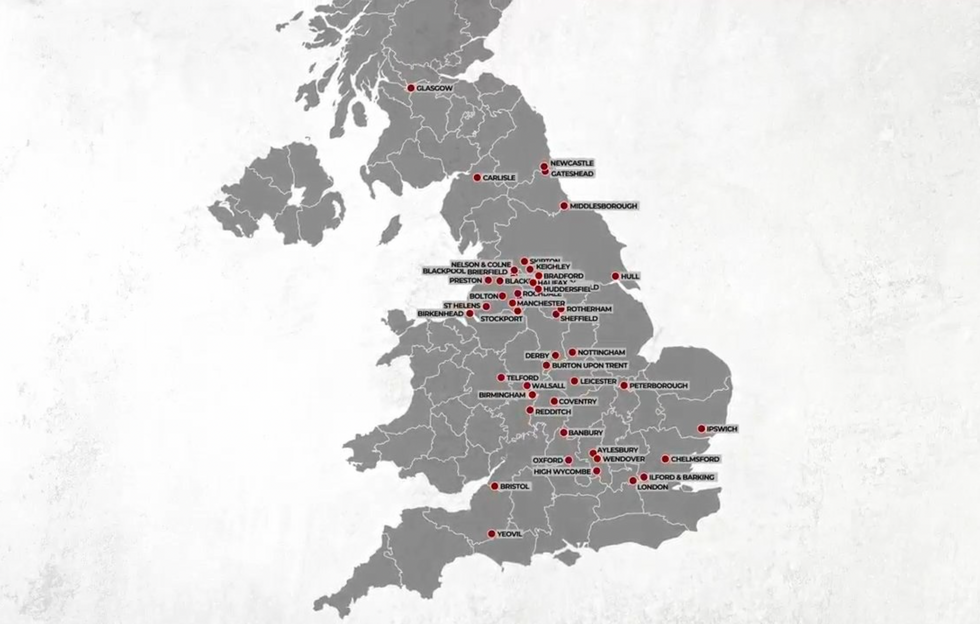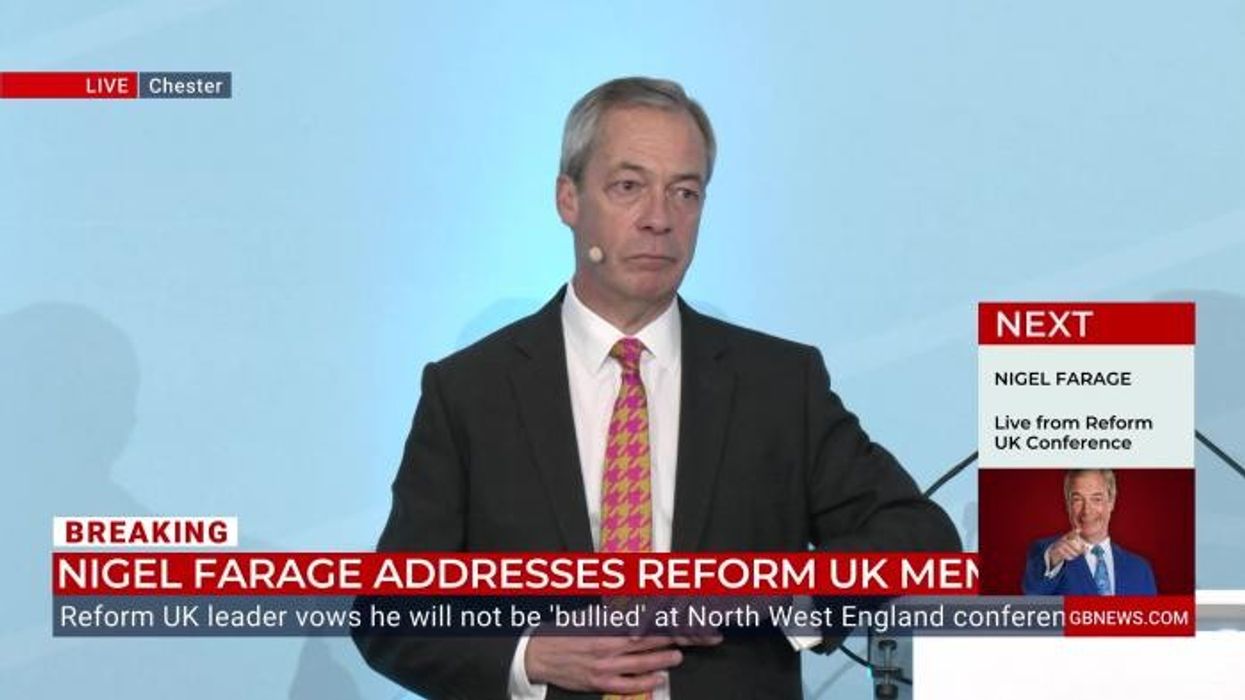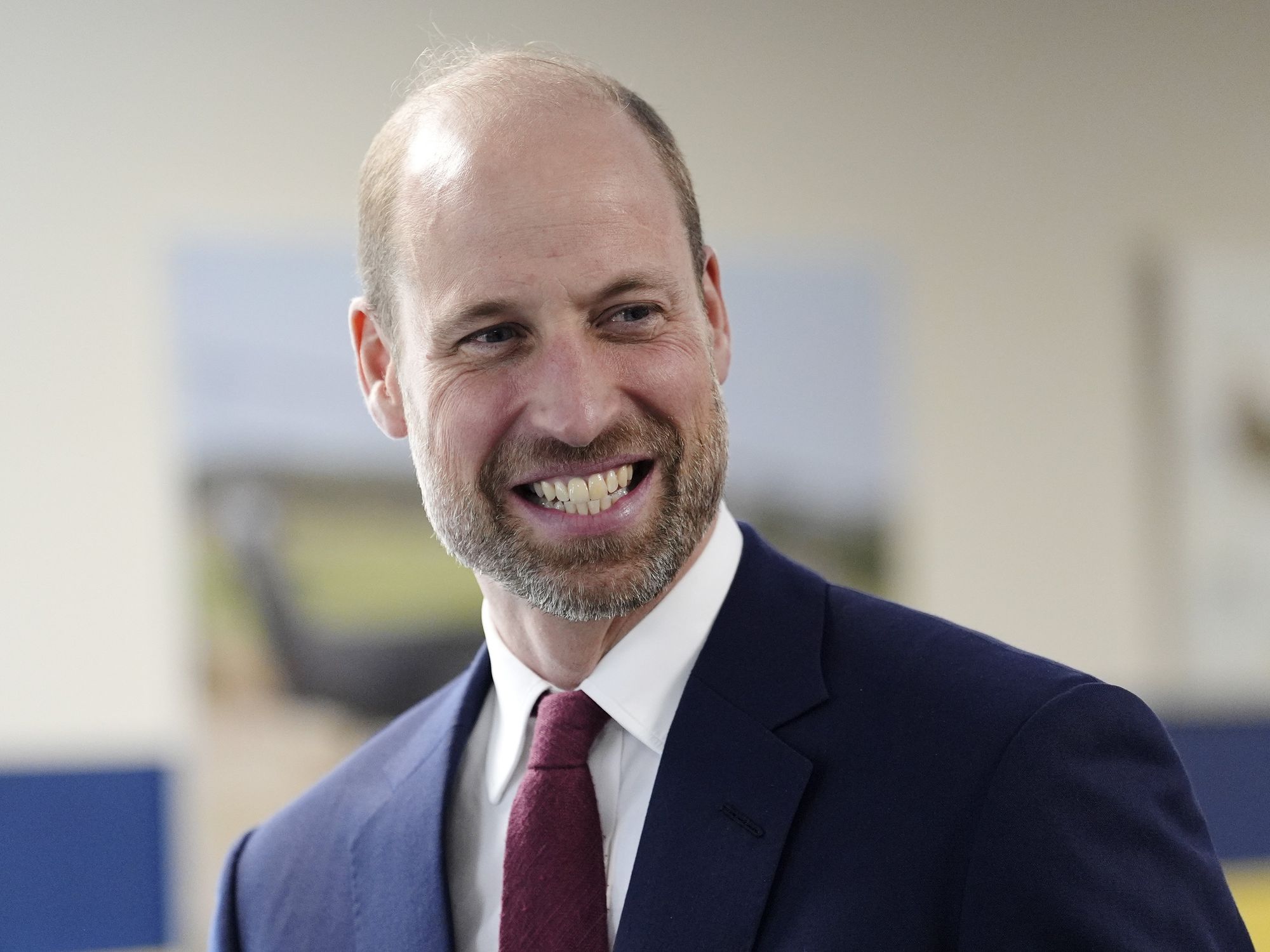EXPOSED: The below-the-radar movement in academia for a DECADE to dismiss grooming gang concerns as 'racist'

GB News has sifted through studies into Britain's grooming scandal over the years - and found an alarming pattern.
Don't Miss
Most Read
GB News has uncovered a consistent pattern of academics framing concerns over grooming gangs as "racism" and rightwing bigotry.
It comes as outrage mounts over the grooming gangs scandal, with several Labour MPs breaking ranks with their party in recent days after a vote on a national inquiry was defeated in the Commons last Wednesday.
Despite the insistence that previous reports addressed the scandal, which saw scores of white working-class girls raped and trafficked across the UK from 1997 to 2013, many questions remain unanswered.
Not least how thousands of child victims were failed by the police, who feared being called racist for documenting the ethnicity of the abusers.
Many official reports danced around the fact that the abusers were of predominantly Pakistani heritage, such as the Independent Inquiry into Child Sexual Abuse (IICSA).
The IICSA report focussed on six areas where the proportion of the population of Pakistani origin is lower than the national average. GB News has uncovered at least fifty towns and cities where grooming gangs operated.
A culture of fear was found to pervade police forces and undermine investigations.
For example, a West Midlands Police report revealed that authorities were aware that grooming gangs were approaching children at school gates but that “the predominant offender profile of Pakistani Muslim males… combined with the predominant victim profile of white females has the potential to cause significant community tensions”.
This report did not see the light of day until it was released in response to a Freedom of Information (FOI) request five years later.
Even Starmer conceded that the ethnicity of the perpetrators had played a role in how these cases were historically approached by the Crown Prosecution Service, during his five-year tenure as Director of Public Prosecutions (DPP).

Despite efforts to conceal the facts, a culture of fear was found to pervade police forces and undermine investigations
| CPSAcademics, avert your eyes
Why, then, did many research papers frame any attempt to draw attention to this variable as a sign of racial bigotry?
GB News has found several examples of this over more than a decade.
Take an academic article published in Sage Journals entitled, "Grooming and the 'Asian sex gang predator': the construction of a racial crime threat".
The 2013 article was published one year after nine men were given lengthy prison sentences for their role in a child exploitation gang in Rochdale.
At one point, the study authors stated that grooming concerns should be "contextualised against deeper-seated concerns", citing "growing Islamophobia in the wake of the 9/11 and 7/7 bombings" among the examples.
They also wrote that the "current fixation with grooming and ‘Asian sex gangs’" serves to "legitimise thinly veiled racism" and that "white co-offenders and ethnic minority victims are routinely downplayed in the insistence that this is a problem of Asian men targeting white girls".
The 2018 book entitled, "Media, Crime and Racism", focuses on the racialisation of crime and the criminalisation of racialised minorities.
The book delves into the role of media in perpetuating racial stereotypes, creating moral panics, and influencing public and policy perceptions of crime, especially in relation to racial and ethnic minorities.
In the chapter on Media, State and ‘Political Correctness’: The Racialisation of the Rotherham Child Sexual Abuse Scandal, Doctor Waqas Tufail, a senior lecturer in criminology at Leeds Beckett University, compared how high-profile sexual abuse scandals were "framed" by the mainstream media during the decade that the grooming gang scandals emerged.
Citing disgraced entertainers Jimmy Savile and Rolf Harris among other high-profile celebrities who were "left unchecked to commit sexually violent offences against young girls and boys over decades", he contended that there was a "marked difference" in how these abusers were depicted and came to be understood when compared with the "groups of men" in towns including Rochdale and Rotherham that had been sexually abusing scores of young girls over a number of years.
In the latter cases, the author claims, issues of violence against women and patriarchy were "relegated and decentred" in favour of a "dominant and mainstream narrative that portrayed the child sexual abuse scandal as primarily due to the uniquely dangerous masculinities of Muslim men", adding that this asymmetry impacted "minority communities and community relations more broadly".
 GB News has identified over 50 different towns and cities that have endured abuse gang | GB News
GB News has identified over 50 different towns and cities that have endured abuse gang | GB News Two years later, another review would be published in the Sage Journals entitled, "Failing victims, fuelling hate: challenging the harms of the ‘Muslim grooming gangs’ narrative"Failing victims, fuelling hate: challenging the harms of the ‘Muslim grooming gangs’ narrative".
The study's central thesis is that the "Muslim grooming gangs narrative", driven by the "rightwing media", has "helped collectively demonise British Muslim communities, especially young Muslim men".
Likening this categorisation to the moral panic over “mugging” in the early 1970s, which stereotyped young black men as potential muggers, the grooming gangs narrative is simply the latest victim in a "broader tendency to racialise crime in political and popular discourse", the study authors contended.
"Muslim men have been stereotyped as both religiously fanatical and prone to committing violent, sexual acts motivated by a patriarchal, misogynistic culture and backwards, barbaric religion," they wrote.
That same year, a Home Office report explicitly stated that efforts to combat grooming gangs should not focus solely on one community or culture, as high-profile cases do not necessarily represent the norm.
The report concludes that group-based child sexual exploitation (CSE) offenders are most commonly white, challenging the narrative of 'Asian grooming gangs.
In an accompanying editorial, Associate Professor in Security and Crime Science Doctor Ella Cockbain and co-author Tufail (cited in the study above), said it was "time to call off the witch-hunt. We need finally to accept what credible research has been telling us for years: that child sexual abuse is not a 'Muslim problem' but is endemic to virtually all communities".
Fast forward to 2025, and researchers are still publishing similar conclusions.
Following Jess Phillips' decision to reject a request for a public inquiry into child sexual exploitation and Elon Musk's barrage of tweets, Tahir Abbas, Professor of Radicalisation Studies at Leiden University, reexamined the impact of media and political biases and the systemic failures that have allowed CSE to persist.
He argued that the racialisation of the issue has diverted attention from broader systemic issues like poverty and institutional neglect.
Citing various statistics, such as the Ministry of Justice and the Office for National Statistics, he concluded that while it is true that some high-profile cases have involved men of Pakistani heritage, broader data suggests that the majority of offenders are white.
This led to the conclusion that "the racialised narrative has been further amplified by political agendas. Right-wing groups and some mainstream politicians have used the 'grooming gang' issue to fuel anti-South Asian sentiment and promote racial stereotypes".
The outlier is the Quilliam Foundation's 2017 report, entitled "Group-Based Child Sexual Exploitation: Dissecting Grooming Gangs", which sought to address the ethnic composition of offenders involved in CSE in Britain.
The report claimed that 84 per cent of offenders involved in grooming gangs were of South Asian heritage, predominantly Pakistani Muslim men.
The report described offenders as often operating in groups, targeting vulnerable young women and girls, frequently from white working-class backgrounds.
It also highlighted cultural and social factors, suggesting that some offenders viewed non-Muslim women as inferior and, therefore, justifiable targets for exploitation.











